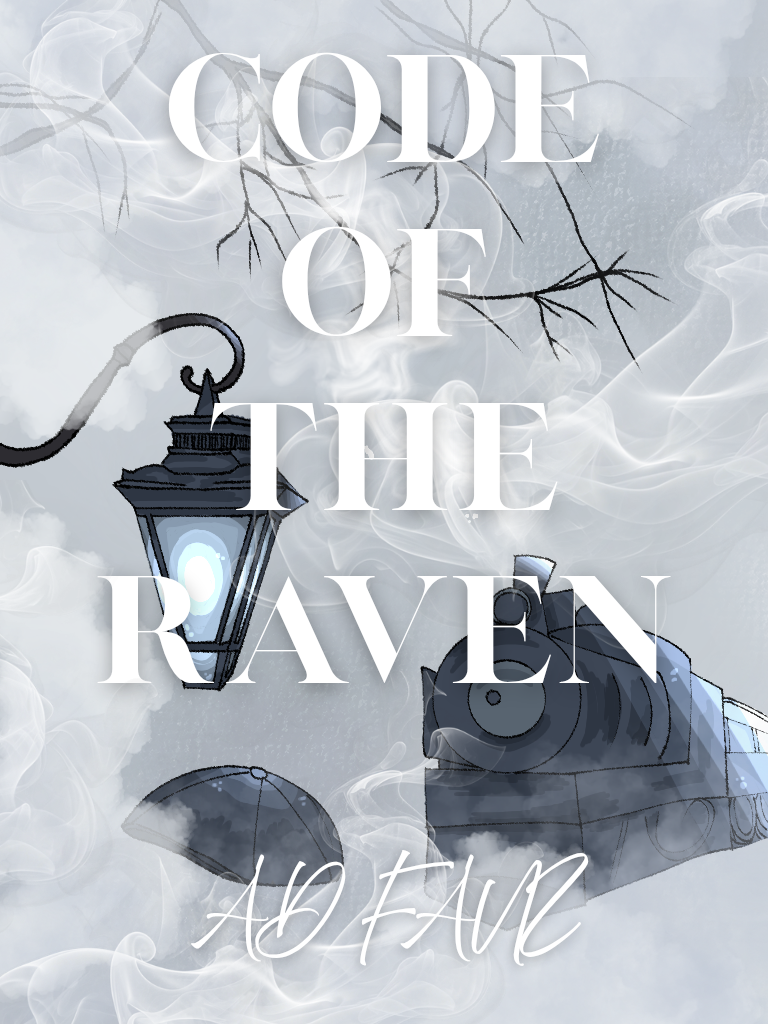Short Story in English
Ad Fauz

Code of the Raven by Ad Fauz
Inspired by Alan Turing and the Enigma Code, WWII
Genre: Mystery, Historical, Wartime, Soft Sci-fi
Status: Complete Short Story
In a quiet English town where silence is rationed and shadows keep secrets, a boy named Eliot receives cryptic letters—typed, unsigned, and always delivered by dawn. No envelope. No explanation. Only numbers.
As war rages beyond the hedgerows, Eliot begins to unravel patterns that no one else sees—signals pointing to danger, decisions, and something far more powerful than code-breaking: memory.
A story of hidden genius, impossible machines, and a mind trained to rewrite fate, Code of the Raven is a haunting blend of historical fiction and speculative mystery. Perfect for fans of The Imitation Game, The Book Thief, or Stranger Things with a wartime twist.
Some letters warn you.
Others choose you.
Bletchley, England – Winter, 1942
In the house at the end of Kingfisher Lane, no one spoke loudly. The walls were thin, and silence was rationed like sugar. People said a ghost lived there, or maybe a genius. But only the boy knew the truth.
His name was Eliot.
Twelve years old. A limp in his left leg. Skin like milk. Voice barely above a whisper.
And every morning, at precisely 6:06 a.m., a letter arrived at his windowsill, tucked neatly under the beak of a black raven statue nailed to the frame.
Typed on a war-era machine. No stamp. No envelope.
Just a line of numbers.
And a signature.
– R
Chapter One: The First Message
The first time he got a letter, Eliot thought it was a mistake.
13 – 5 – 6 – 23 – 1 – 18
He decoded it using a simple A=1 cipher.
M E F W A R
Meaningless.
But the next day, another arrived:
“They will test the sirens at 2:06 p.m.
Cover your ears.”
They did.
He did.
Everyone else didn’t.
The sound broke glass and burst eardrums.
After that, he didn’t question the letters.
Chapter Two: The Man in the Red Coat
Eliot lived with his aunt, who worked at Bletchley Park—home of the top-secret wartime code-breakers. She brought home crossword puzzles instead of bedtime stories and once slapped him for asking what “Enigma” meant.
He stopped asking questions.
But he kept decoding the letters.
Some warned of small things—storms, broken power lines, a missed train.
Others felt… bigger.
Like someone was trying to stop something terrible before it happened.
Then one letter simply read:
“He wears red.
He knows who you are.”
– R
That night, Eliot saw a man in a long red coat watching the house from across the field. He never moved. Never blinked.
Just stood there.
Eliot shut the curtains. And for the first time, locked his window.
Chapter Three: The Real Code
The tenth letter came with something new.
A page torn from a book. Covered in strange lines, circles, and chess notation.
At the bottom:
“This is not prophecy. This is programming.”
– R
Eliot took it to a quiet librarian named Mr. Forsythe, who never asked questions. Forsythe stared at it for a long time before saying:
“These are instructions. Like from a machine. But they’re in reverse. Whoever wrote this…”
He trailed off.
“What?”
“They aren’t warning you, Eliot. They’re training you.”
Chapter Four: Eliot’s Move
The eleventh message changed everything.
“The train tomorrow. Platform 4. 7:03 a.m.
If you get on it, the war ends.
If you don’t, it continues.”
He didn’t tell his aunt.
He went.
And at exactly 7:03 a.m., Eliot stepped onto a nearly empty train.
There was only one other passenger.
A man in a black coat, holding a raven-shaped cane.
He looked at Eliot, smiled sadly, and said:
“You’re early.”
Chapter Five: The Countdown
December 1942.
Eliot is taken to a hidden underground facility. The man with the raven cane calls it “The Terminal Room.”
Dozens of machines whirl around them—cipher engines, data loops, blinking lights—and one massive prototype unlike the rest.
“They call it the Raven. It can predict possibility. But it can’t act.”
Eliot blinks. “So why am I here?”
“Because the Raven doesn’t need numbers anymore. It needs memory.”
He hands Eliot a typed message.
The final letter.
It’s blank.
And then Eliot sees it. Faint. Backwards. Hidden under the heat of the lightbulb.
13 – 5 – 6 – 23 – 1 – 18
The first message.
The very first one.
He stares at it.
The man in the coat leans against a wall covered with maps marking different territories.
Suddenly, his hands move. The code unspools in his mind—not as letters, but as a pattern.
13 (M)
5 (E)
6 (F)
23 (W)
1 (A)
18 (R)
But what if it wasn’t a word?
What if it was a coordinate?
He overlays it onto the giant war map on the table—latitudes and longitudes.
It points to one place:
Bletchley Park. The west lab.
“The bomb is here,” Eliot whispers. “Not in Germany. Not in France. Here. Someone’s planted it—someone from the inside.”
The man’s face drains of color.
“How long do we have?”
Eliot looks at the last number.
18.
“It goes off in eighteen minutes.”
Finale
They find the device beneath a false floorboard.
Coded timer.
No wires to cut.
Just a keypad.
And a prompt:
“WHO MADE YOU?”
Eliot looks at the Raven machine.
This is bizarre.
Insane.
Foolish.
But it is what it is. And Eliot has learned.
He types six letters:
“E L I O T”
The screen blinks.
Accepted.
The bomb powers down.
And for the first time in weeks, the raven statue by his window doesn’t carry a letter.
It simply falls.
Epilogue
Years later, historians would debate whether a boy named Eliot Flynn ever existed.
Turing’s files were sealed.
The Raven prototype was disassembled and hidden.
But in the Bletchley archives, one photo remains: a boy with pale skin, holding a chess piece, standing beside a raven-shaped machine.
On the back, written in careful cursive:
“The war was won with many minds.
But only one memory.”
– R
The End
Or… Is it?
